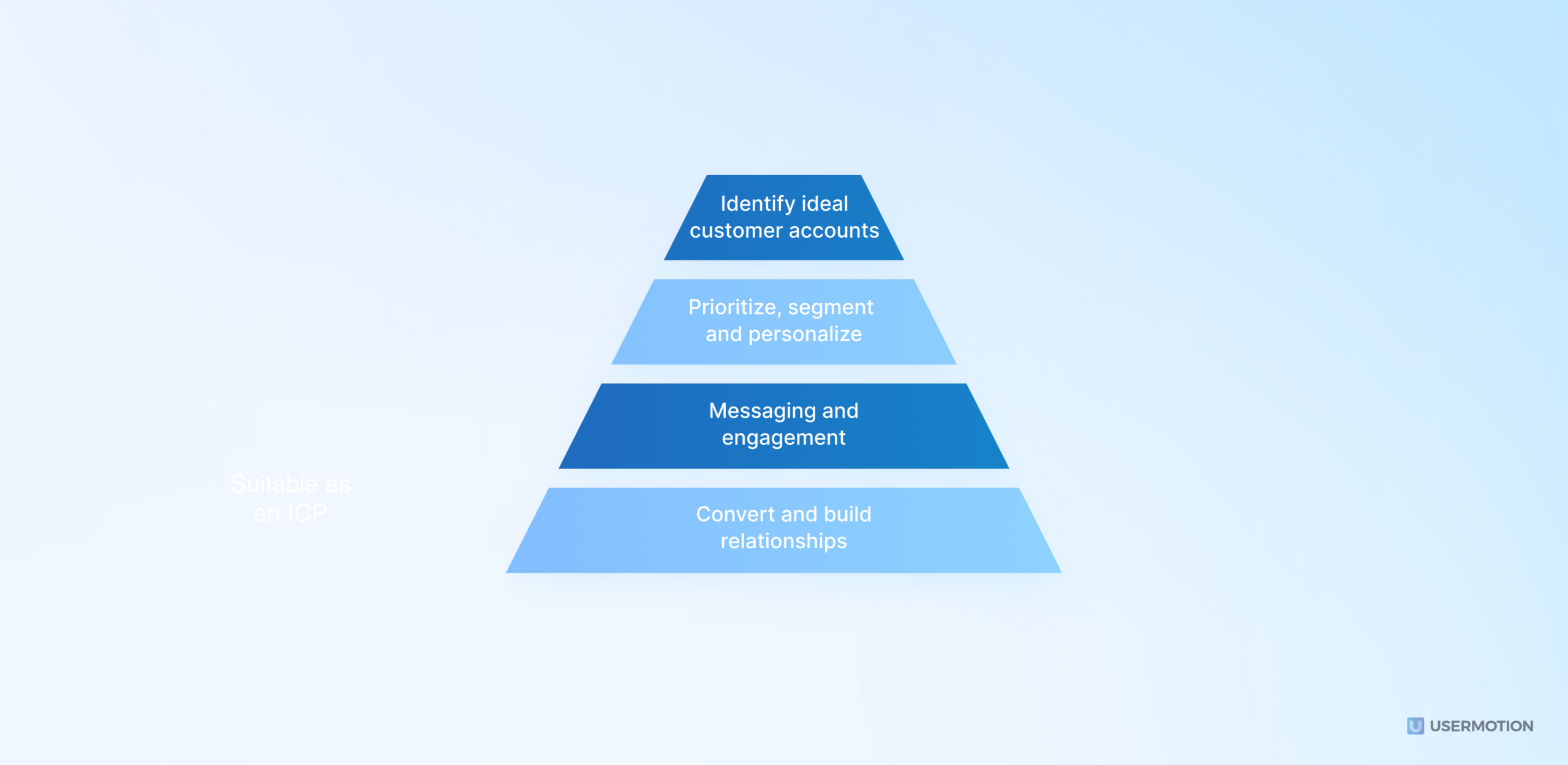ABM takes a more focused approach. Instead of casting a wide B2B net, ABM as a B2B marketing strategy targets specific high-value accounts with a higher likelihood of conversion.
And it works, too. 97% of the marketers reported getting a higher ROI with ABM than other marketing initiatives.
Key Takeaways
- Account-based marketing is the more focused and dedicated way of marketing for B2B companies.
- In fact, B2B companies that embraced ABM generate 4x more revenue for their marketing.
- ABM along with inbound marketing opens a way for more conversion.
- Predictive lead scoring ease the identification and prioritization of ideal customer accounts, which result in more successful ABM.
What is Account-Based Marketing (ABM)?
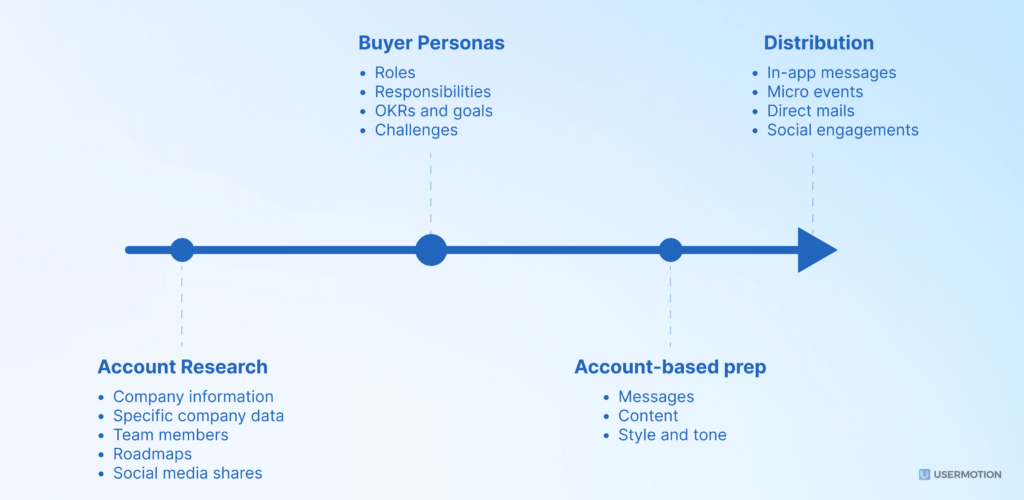
ABM is a growth strategy of targeting high-value B2B buyers as a market of their own, with personalized campaigns and specially designed inbound content marketing.
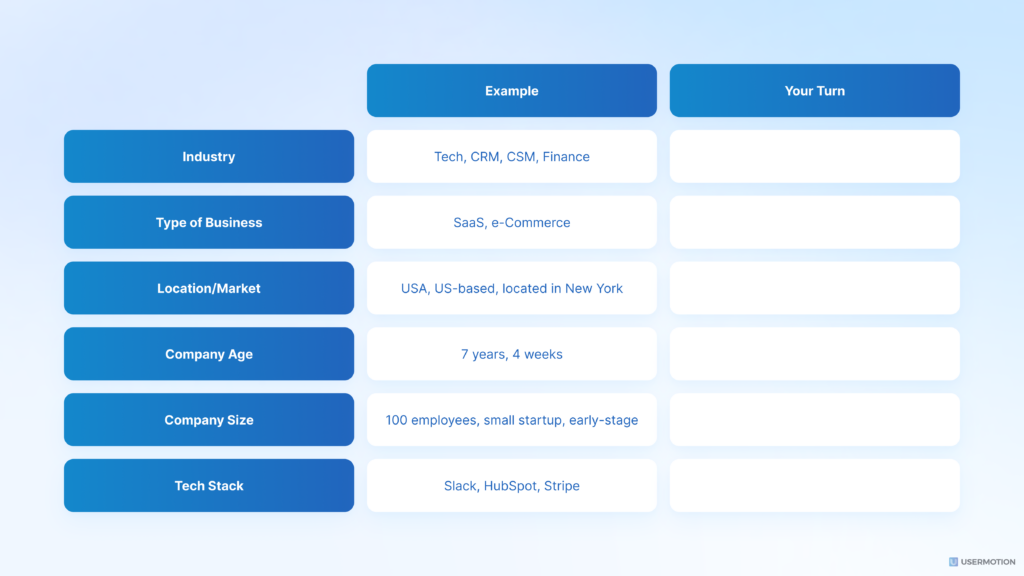
Instead of casting a wide net on a broad audience, ABM focuses on a select number of key accounts that match the ICP of the business with highly personalized marketing designed to their unique needs and challenges.
This targeted strategy might mean reaching out to fewer potential customers. But it greatly improves the chances of making a sale and can lead to better profits because it takes less time to close deals. The less the targets, the higher the conversion. It is more focused. It is more dedicated.
Account-based marketing framework is a top-to-bottom sales funnel strategy, that involves everyone from marketing to sales. It requires careful planning to decide how to use resources, identify which customers to focus on, and set goals for each sales effort.
ABM is a good fit for your business if:
- You have a higher ticket-size product that requires the approval of finance teams.
- You are dealing with groups or groups of stakeholders where more than three people make the buying decision.
- Your goal is to sell a comprehensive package of services, leading to larger contracts.
- You are product-led company and aim to unify your sales and marketing teams for a better buying experience for customers.
- Your number of potential customers is small, but they can be divided into different groups based on their purchasing stage and market size.
- You are looking to speed up your sales process and close deals more quickly.
ABM & Inbound Marketing
ABM and inbound marketing go hand in hand. For ABM to succeed, your company’s inbound marketing channels must execute the personalization.
Since ABM is a highly targeted strategy, it bodes well to ensure valuable content is created at every prospect and customer touchpoint. This way, you’re attracting leads (inbound) by creating content required and demanded by your ICP.
Getting this clarity on your content strategy results from the ABM framework, which instructs on singling out your target group (account) and ascertaining everything there is to know about them.
Here’s how it plays out in five steps:
1. Identify The Accounts
The first step is identifying key accounts that match your business goals. These accounts must be aligned perfectly with your goals and have the right industry background, market size, team size, annual revenue, etc. Other factors, such as their likelihood of becoming repeat customers, must also be considered.
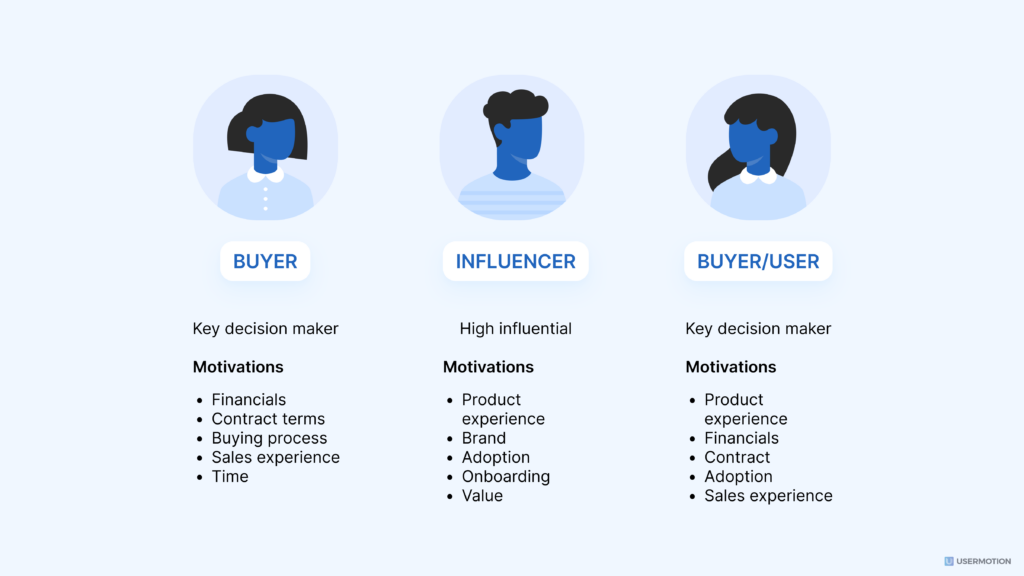
After identifying these accounts, the next step is to create a detailed buyer persona. This involves understanding the specific challenges and needs of your buyers. This brings us to step 2.
2. Prioritize Target Accounts
Once you have identified the key accounts that align with your business objectives, the next critical step is prioritizing these accounts. This means evaluating each account to determine how closely they fit with your ideal customer profile. You’ll consider factors like their industry relevance, market influence, and financial stability.
It’s also important to assess the likelihood of them becoming loyal, repeat customers. This prioritization helps you focus your resources and efforts on the accounts that offer the most potential for long-term partnerships and growth. This strategic focus is essential for moving effectively to the subsequent stages of your account-based marketing strategy.
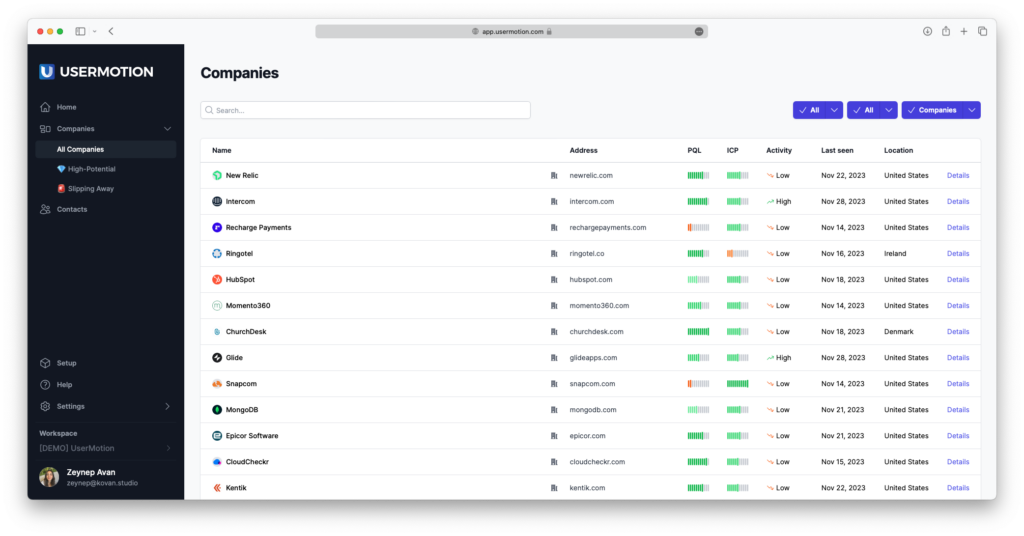
Product-led CRM tools like UserMotion is best for identifying and prioritizing those accounts, so that you can create your ABM strategy with actionable data in your hand.
3. Identify Common Pain Points
You have all the data, and now you need to work on your messaging more clearly. A successful ABM strategy also requires a full understanding of the common pain points your target accounts suffer from.
This is about understanding the challenges, obstacles, and issues that your targeted businesses frequently encounter.
This step is key in creating messages and solutions that meet deeply with your target accounts. It’s not just about knowing what they need, but also why they need it and how your offering can make a significant difference in their business operations.
4. Create A Content Marketing Plan
Remember, especially with larger businesses, decisions aren’t made by a solo executive but by a whole crew of stakeholders. ABM builds relationships with each potential buyer, pulling them into the purchase decision with awesome, company-specific content that speaks to each one.
Once you know the target personas, dive deep into their unique challenges and create compelling content for each stakeholder. For example, finance executives are worried about pricing. Likewise, operations are concerned with usability. Address each concern with laser-focused content and make it look like you’re addressing their issues with your content library without them reaching out to you.
5. Distribute Your Content
Content is really important, but it’s also about how you share it. You need to know where your target accounts like to spend their time online.
For example, if they are more likely to real emails, make sure to send them interesting and useful emails.
If they’re always on LinkedIn, then that’s where you should focus on building a strong presence.
The key is to find out where your customers are and then share great content with them there. This way, you’ll catch their attention and stand a better chance of winning their business.
6. Pitch and Nurture
Now we’re talking nurture mode! This stage is about cultivating strong relationships with those key stakeholders who you believe will passionately champion your brand within their organization. In a world where buyers are used to tuning out the noise, ABM builds cheerleaders who do an excellent job promoting the brand inside their business.

7. Evaluate and Optimize
If everything’s alright and in place, your ABM and Inbound marketing journey enters a flywheel and operates independently. This is the perfect time to take a step back and review the ABM strategy. Dive into the data at the account level, figure out what hit the bullseye and missed the mark, and brainstorm how you can fine-tune and improve over time.
Why Account-Based Marketing?
ABM turbocharges your outreach and sales cycle process by letting your marketing and sales team focus on accounts that matter with impactful messaging that converts.
Here are the many ways in which account-based marketing benefits your business:
Tailored Marketing Approach
Unlike traditional “one-size-fits-all” marketing, ABM allows B2B marketers to create personalized messages for their target accounts. The key accounts are assessed, and creative content assets are created to suit each account’s specific needs and attributes.
Short Sales Cycles
Big purchase decisions usually involve a cast of decision-makers, which can slow down the sales process. With ABM, all the prospects are nurtured simultaneously, resulting in a streamlined sales cycle. You no longer have to wait for decisions to trickle down from the upper level, as communication is extended to all stakeholders.
Sales and Marketing Synergy
For ABM, marketing and sales teams must be on the same page from day 1. Together, they develop cohesive marketing and sales strategies, saving time for both teams and ensuring a consistent and seamless buying and after-sales experience across all targeted accounts.
Transparent ROI
ABM is a precise and measurable strategy. A whopping 85% of marketers measuring ROI describe ABM as the top performer, which is more than any other marketing approach in Business-to-Business (B2B).
Efficient Resource Allocation
Your resources are limited. ABM’s targeted approach means resources are wisely concentrated where they matter most. This reduces wastage and frees up valuable time and energy, thereby reducing acquisition costs and boosting ROI.
How To Integrate Account-Based Marketing Strategy With Predictive Lead Scoring
Account-Based Marketing, when combined with Predictive Lead Scoring, is a marketing powerhouse of targeting the accounts you want with the exact messaging that they want to hear. This hyper-focused and synergistic approach allows you to target your efforts on leads that matter.
Here’s a quick guide on how you can seamlessly implement ABM with Predictive Lead Scoring in your business:
1. Identify The Ideal Customer Persona
A successful ABM implementation begins with a crystal-clear understanding of your Ideal Customer Profile.
Pull your marketing and sales teams together to outline the key traits of high-value accounts.
- Ideal Customer Profile Fit: Accounts must closely align with the outlined characteristics in your Ideal Customer Profile, including industry, company size, and demographics.
- High Revenue Potential: Prioritize accounts with substantial revenue potential to ensure efforts are concentrated on accounts that bring significant value to the business.
- Engagement History: Evaluate accounts based on their past interactions with your company, such as website visits, content downloads, or event attendance, to gauge their level of engagement.
- Decision-Making Authority: Identify accounts with clear decision-making authority or influence within their organization to streamline communication and decision-making during sales.
- Alignment with Business Objectives: Seek accounts whose goals align closely with your business objectives, increasing the likelihood of establishing a mutually beneficial partnership.
2. Integrate Predictive Analytics Tool
Getting the ideal target account is step one of the process. Next is integrating predictive analytics tools with your CRM to assess and segment leads as per their likeliness to ICP.
These tools analyze vast datasets and study patterns and behaviors that indicate a lead’s potential to convert.
Check out UserMotion’s lead dashboard, with companies (leads) listed as per their closeness to the ICP AND proximity of conversion.
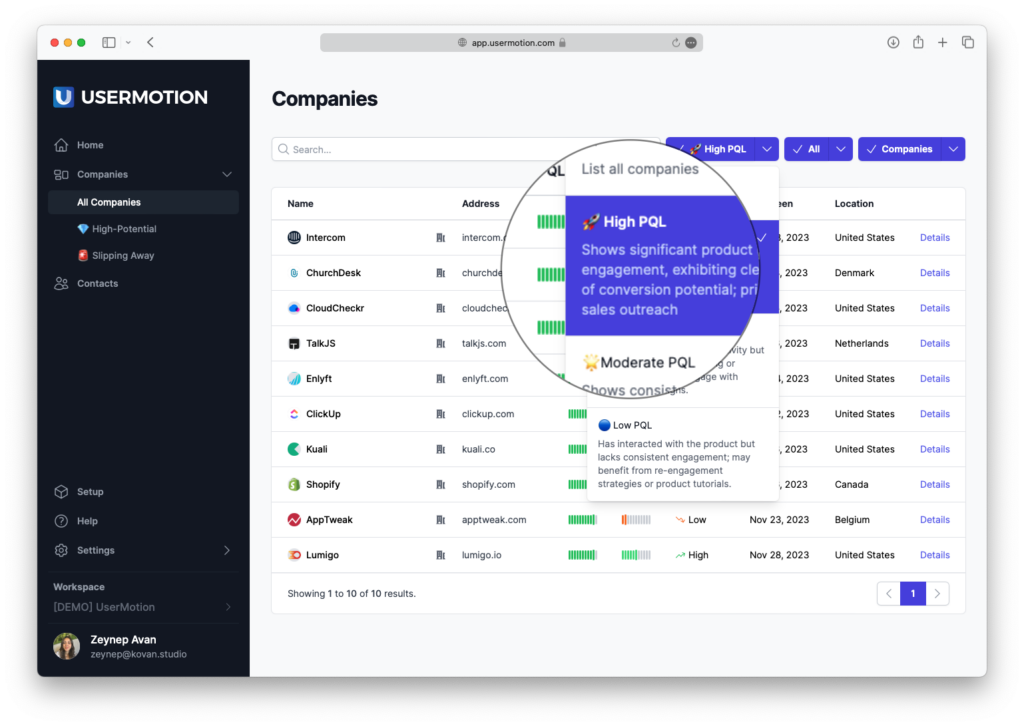
UserMotion’s dashboard further segments the leads into High, Moderate, and Low PQL based on their alignment with your ICP. This allows you to prioritize leads based on their likelihood to contribute to your business objectives.
Predictive lead scoring becomes more effective when it aligns with the criteria that make an account an ideal fit for your business.
3. Realign the Business Model with ABM
As we stated earlier, ABM is a total sales revampment strategy. To institute this top-to-bottom change, it is important for all departments to be on board, particularly the sales and marketing departments.
Effective communication and collaboration between sales and marketing are crucial for the success of ABM with Predictive Lead Scoring. The sales team must understand the insights from predictive lead scoring to align their efforts with high-value accounts.
Take, for instance, a B2B SaaS company that has adopted ABM. The marketing team may allocate resources to create personalized content for a key account, while the sales team is responsible for timely follow-ups and tailored interactions.
The operation’s success will be judged on metrics such as account engagement, conversion rates, recurring clients, and total revenue generated for the period.
4. Tailor Content and Create Campaigns
With predictive lead scoring guiding your ABM strategy, focus on creating highly personalized content and campaigns. Understand the pain points, preferences, and challenges of your target accounts. Craft content that resonates with each account’s unique needs, increasing the likelihood of engagement and conversion.
Conclusion
Account-based marketing requires an overall revamp of your sales, marketing, messaging, and content strategy. This 6 step process, combined with UserMotion’s predictive lead scoring and sales intelligence, is a great place to start.
UserMotion’s Predictive Lead Scoring solution is a game-changer for B2B SaaS companies looking to elevate their lead prioritization strategy.
By combining key product usage analysis, seamless integrations, custom signals, account-level scoring, and real-time alerts, UserMotion empowers your GTM team to focus their efforts where they matter most—on leads and accounts with the highest potential for conversion.
Try UserMotion for free. Get started here.
Frequently Asked Questions
ABM is a growth strategy of targeting high-value B2B buyers as a market of their own, with account-level personalized campaigns and specially designed inbound content marketing.
By its nature, B2B companies should value buyer accounts first before individual buyers. Their dynamics are fully different from B2C, therefore, these companies should embrace account-level and account-based activities more than ever.
The main difference between ABM and B2B marketing is the level of getting personalized and focused. B2B marketing strategies target more general audiences why ABM segment users and create more focused marketing processes.

